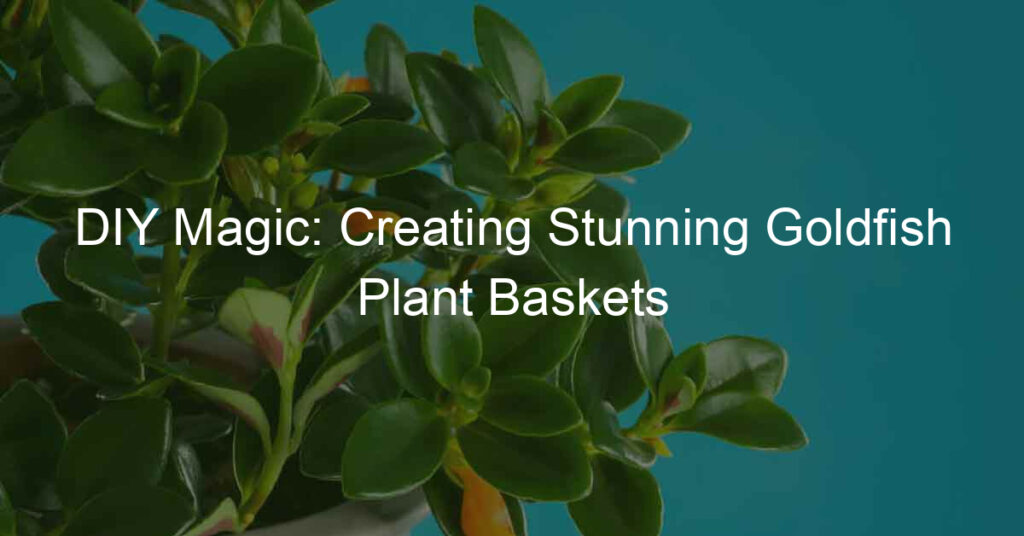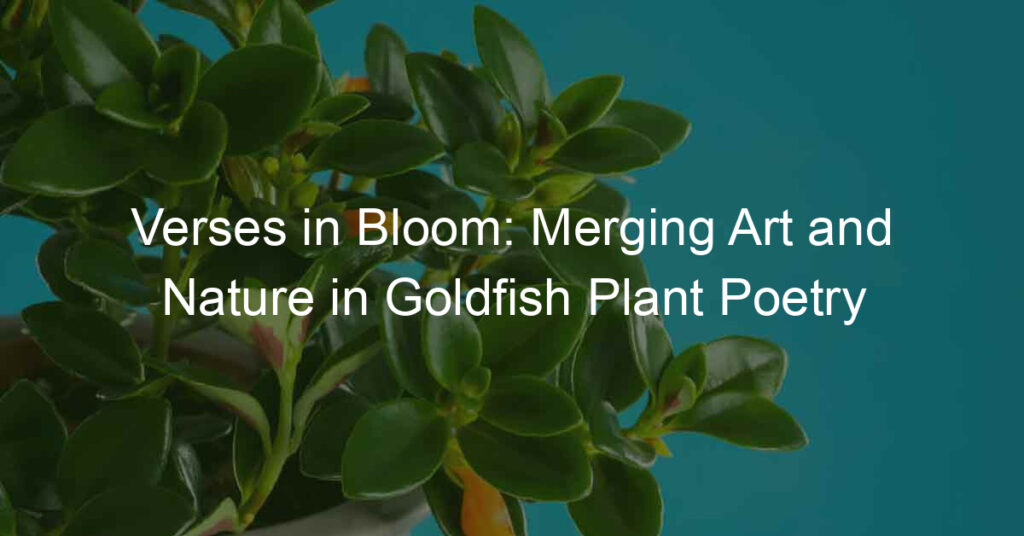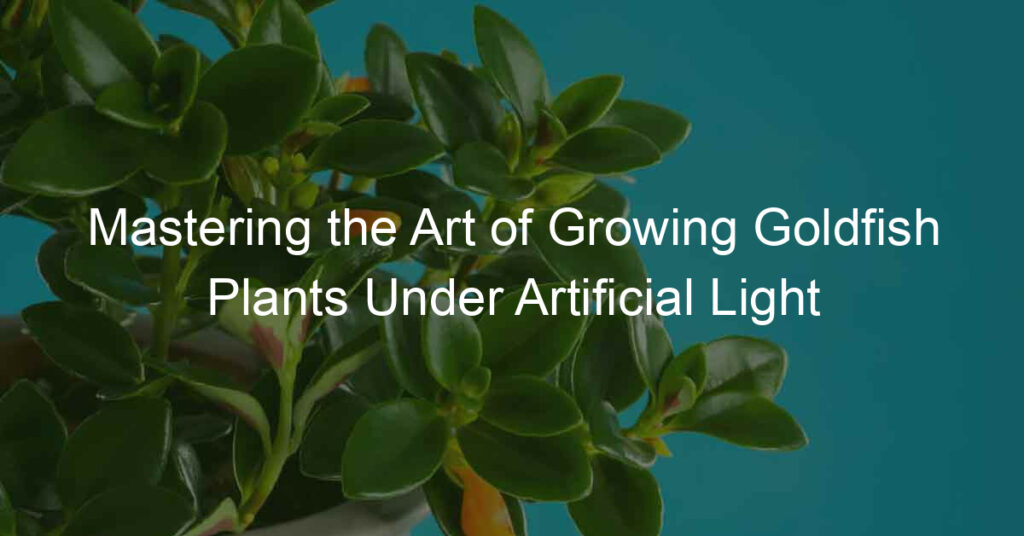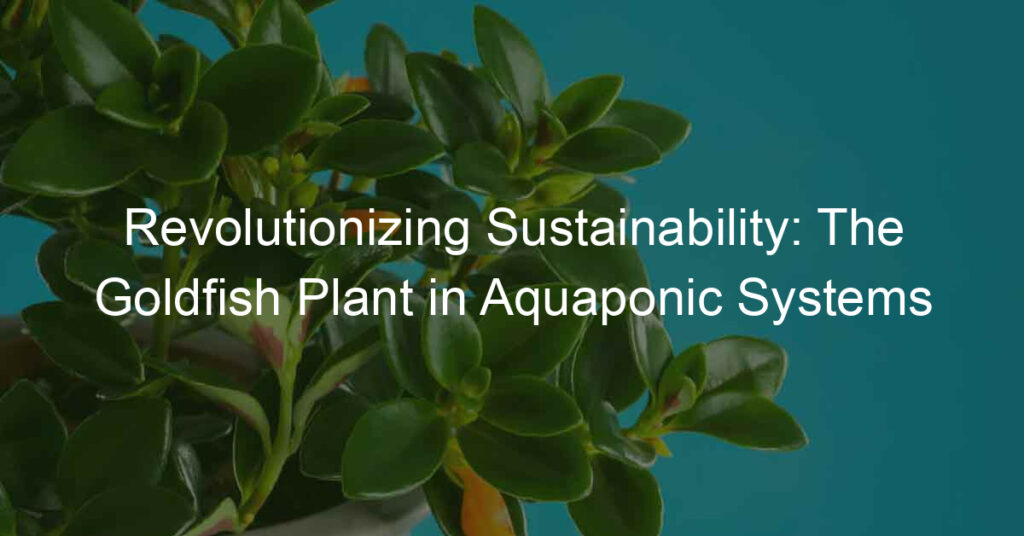To propagate your goldfish plant, you’ll need to take a stem cutting from an existing plant.
Make sure to choose a stem that is healthy and free of any pests or diseases.
Cut the stem at a 45-degree angle below a node (the point where leaves are attached).
Remove the lower leaves from the cutting, leaving two or three sets of leaves at the top.
Dip the cut end of the stem in rooting hormone powder or gel.
Plant the cutting in a pot filled with moistened perlite, vermiculite, or sand.
Water the soil well and place the pot in a warm, bright location out of direct sunlight.
Keep the soil moist but not soggy; you should see new growth within a few weeks. Once the plant is established, you can transplant it into a larger pot or outdoor garden bed.
Is a Goldfish Plant a Sun or Shade?
Goldfish plants (Nematanthus gregarius) are tropical evergreens that produce small, bell-shaped flowers.
They’re native to Brazil but often grown as houseplants in the United States.
They can tolerate various lighting conditions, from full sun to partial shade. However, they flower best when they’re grown in bright light.
If you want your plant to produce an abundance of flowers, give it plenty of light.
But if you’re more interested in foliage growth, you can grow the goldfish plant in lower light levels.
How Long Does It Take To Propagate a Goldfish Plant?
It usually takes around four to six weeks for them to root and establish themselves.
Once they’re transplanted into a larger pot or garden bed, they should begin to flower within a few months.
Remember, these plants thrive in warm temperatures ranging from 60 to 85 degrees Fahrenheit.
If you live in a colder climate, you can grow your plant indoors near a sunny window.
Just be sure to keep it out of direct sunlight, which can cause the leaves to burn.
Goldfish plants can also be grown outdoors in warmer climates.
Just make sure to place them in a spot that receives plenty of shade during the afternoon.
By taking these actions, you’ll help ensure that your plant remains healthy and produces plenty of flowers much faster.
What Are the Best Conditions for Goldfish Plants?
Goldfish plants prefer warm temperatures and high humidity.
They will tolerate some drought, but they prefer to be kept moist.
Allow the top inch of soil to dry out between waterings.
For best results, grow goldfish plants in rich, well-drained soil that’s been enriched with organic matter.
These plants also benefit from occasional fertilizer during the growing season.
Apply a balanced fertilizer every two to four weeks from spring through summer.
Cut back on fertilizer in fall and winter, when the plant is dormant.
Goldfish plants are relatively low-maintenance and easy to care of.
Should I Trim My Goldfish Plant?
Goldfish plants can be trimmed as needed to maintain a tidy shape.
But if you want your plant to produce an abundance of flowers, it’s best to leave it unpruned. However, if your plant starts to get leggy or overgrown, you can trim it back to encourage new growth.
When Is the Best Time To Propagate Goldfish Plant?
Goldfish plants can be propagated at any time of the year.
However, the best time to propagate is during the spring or summer when the plant is actively growing.
in other words, when the plant is in its vegetative state.
Goldfish plants can be propagated by stem cuttings or by division.
To propagate the goldfish plant by stem cuttings, take a 4-6 inch cutting from a healthy stem and remove the bottom leaves. Dip the cutting in the rooting hormone and then plant it in a moist potting mix.
Place the pot in a warm, bright location out of direct sunlight and keep the soil moist. The cutting should root within 2-4 weeks.
To propagate the goldfish plant by division, simply divide the roots of an existing goldfish plant during repotting. Each division should have several stems with leaves attached.
Plant the divisions in a moist potting mix and place the pot in a warm, bright location out of direct sunlight.
Keep the soil moist until the plants are established.
Both methods of propagation will result in new goldfish plants that are identical to the parent plant.
Is It Better To Root In Water or Soil?
There is no definitive answer to this question as both methods can be successful.
Rooting goldfish plants in water may result in a higher success rate, but it can also lead to problems down the road, such as root rot.
Rooting goldfish plants in soil is a bit more work, but it will ultimately result in a healthier plant. Also, when propagating goldfish plants by division, it is best to do so in soil.
Why Is My Goldfish Plant Drooping?
There are several reasons why a goldfish plant might droop.
The most common reason is that the plant is not getting enough water.
Another possibility is that the plant is not getting enough light.
Goldfish plants need bright, indirect light to prosper. If your goldfish plant is drooping, check to see if it needs more water or more light.
Also, make sure the plant is not sitting in water, as this can cause the roots to rot. Consult a professional if you cannot figure out why your plant is drooping.
Conclusion
Goldfish plant propagation is a relatively easy process that can be done at any time of the year. The best time to propagate the goldfish plant is during the spring or summer when the plant is actively growing.
Goldfish plants can be propagated by stem cuttings or division, and both methods will result in new plants that are identical to the parent plant.
With a little care and attention, your plants will thrive and provide you with beautiful foliage for years to come!








